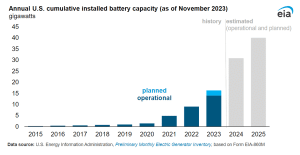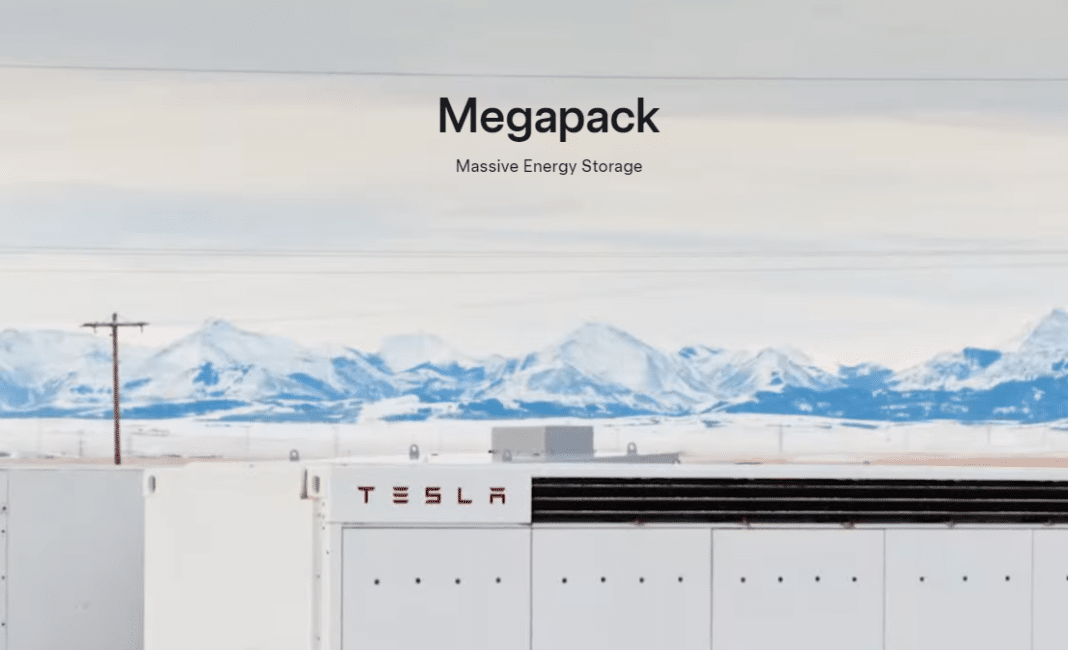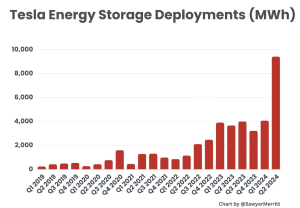While Tesla’s energy storage segment is smaller than its automotive business, it has been experiencing significant growth. This segment has rapidly accelerated and expanded after maintaining consistent growth over the years, with recent massive Megapack contracts secured.
Tesla and Intersect Power have signed a contract for 15.3 GWh of Megapacks, Tesla’s advanced battery storage system, for the latter’s solar and storage projects through 2030. This deal, along with previous agreements, positions Intersect Power as one of the top global buyers and operators of Megapacks. It has nearly 10 GWh of large-scale storage expected by the end of 2027.
Though the contract’s cost wasn’t disclosed, the massive energy involved says it’s a multi-billion dollar deal, depending on pricing.
Tesla’s Megapack is a large-scale lithium-based battery energy storage system aimed at improving grid stability and preventing outages. Each unit has a storage capacity of over 3 MWh, sufficient to power 3,600 homes for 1 hour.
Tesla’s Battery Energy Storage Crazy Growth
Despite a decline in automotive revenues, Tesla has seen growth in other business segments, particularly in energy storage, which is becoming increasingly profitable. With the rising number of Megapack installations and an expanding fleet, Tesla expects consistent profit growth in this segment.
In Q1 2024, Tesla’s energy storage deployments hit a record high of 4.1 GWh. Revenue and gross profit from the Energy Generation and Storage segment also reached all-time highs.
In Q2 2024, Tesla Energy deployed 9.4 GWh of energy storage products, including Megapacks, Powerwalls, and solar products. That’s more than double the Q1 2024 deployment (132% increase) and up 157% year-over-year.
Tesla has previously supplied 2.4 GWh of Megapacks for Intersect Power’s solar and storage facilities, which are either operational or under construction.
The new agreement will see more than half of the Megapacks used for 4 major battery installations in California and Texas. They will begin operations by the end of 2027, including some of the biggest battery installations in the U.S. The remainder will be allocated to future solar and storage projects coming online between 2028 and 2030.
Mike Snyder, Senior Director of Tesla Energy, stated,
“Intersect continues to be an exceptional partner, and their development expertise combined with the plug-and-play nature of Tesla’s vertically integrated technology enables the speed and scale needed to enhance grid resilience and support greater renewables integration.”
Amplifying Intersect Power’s Leadership in Clean Energy Storage
Intersect Power is a clean energy company focused on innovative, scalable low-carbon solutions. Established in 2016, the company develops, owns, and operates some of the world’s largest clean energy resources, delivering low-carbon electricity, fuels, and related products for both domestic and international markets.
Intersect Power is committed to advancing grid-tied renewables and large-scale clean energy assets, including battery storage, data centers, and green fuels. It has a portfolio of 2.2 GW of operating solar PV and 2.4 GWh of storage.
The energy company is known for its large and adaptable Battery Energy Storage Systems (BESS) at its solar and storage facilities in Texas and California. The Megapacks are set for delivery in 2025 and 2026 and will be produced at Tesla’s Megafactory in Lathrop, California.
Currently, Intersect Power has 2.4 GWh of Tesla Megapacks either operational or under construction. These include the 1 GWh at the Oberon solar and storage facility and 448 MWh at the Athos III solar and storage facility in California. An additional 1 GWh of Megapacks is being installed at the Radian and Lumina solar and storage facilities in Texas. Their full operational status are expected within the year.
According to the U.S. Energy Information Administration, battery storage capacity in the country has been on the rise since 2021. It is projected to increase by 89% by the end of 2024, provided that developers bring all planned energy storage systems online as scheduled.

Tesla Energy’s Power Gain Major Boost with Megapacks
Tesla Energy has also signed a $375 million contract to provide Megapacks for a major battery project in Australia. The agreement will support the construction of a 415 MW/1660 MWh battery, one of the world’s largest four-hour duration batteries.
The Megapacks will be used for Akaysha Energy’s Orana Battery Energy Storage System (BESS), located in New South Wales within the Central West Orana Renewable Energy Zone (REZ).
Tesla Megapacks have been making notable strides in Australia’s energy market. In October 2023, a 150 MW/300 MWh Tesla Megapack system was commissioned in New South Wales.
Earlier this year, a 250 MW/500 MWh project broke ground in Queensland. Additionally, in April 2024, Tesla Energy was awarded a contract by Neoen to expand the Collie Battery, aiming to transform it into the largest battery in Australia, with a final capacity of 560 MW/2,240 MWh.
This Megapack agreement, alongside Tesla and Intersect Power’s significant deal underscore the growing demand for advanced energy storage solutions. These partnerships are set to enhance grid stability and support the transition to a low-carbon economy worldwide.



